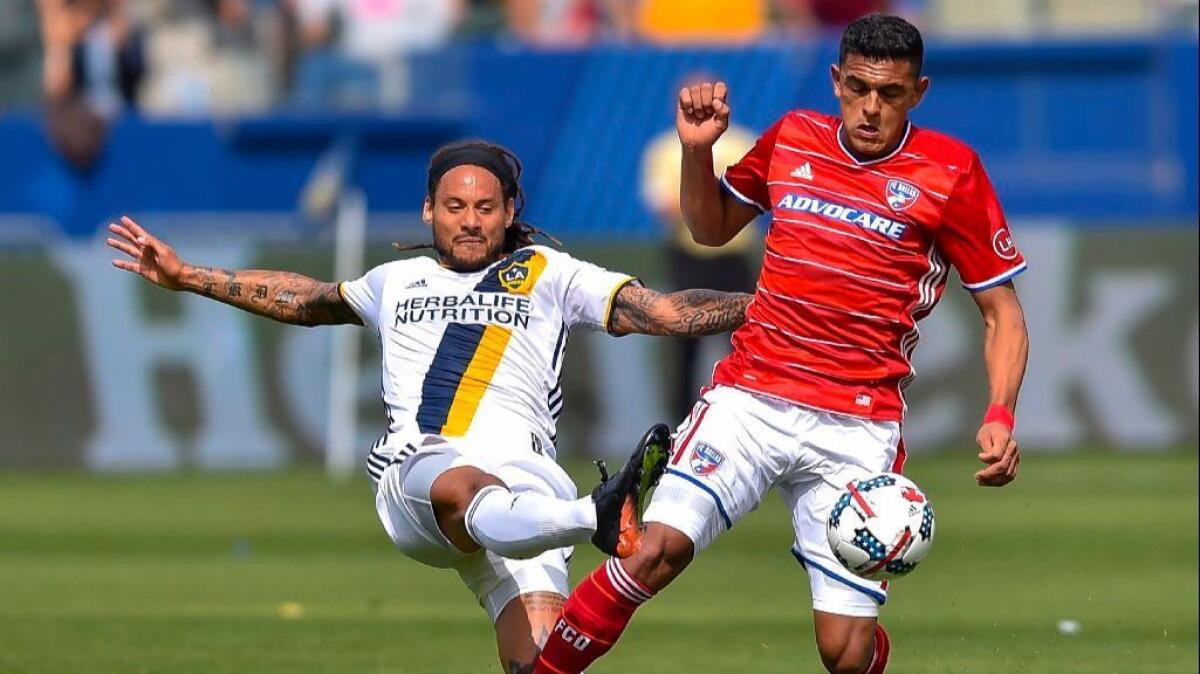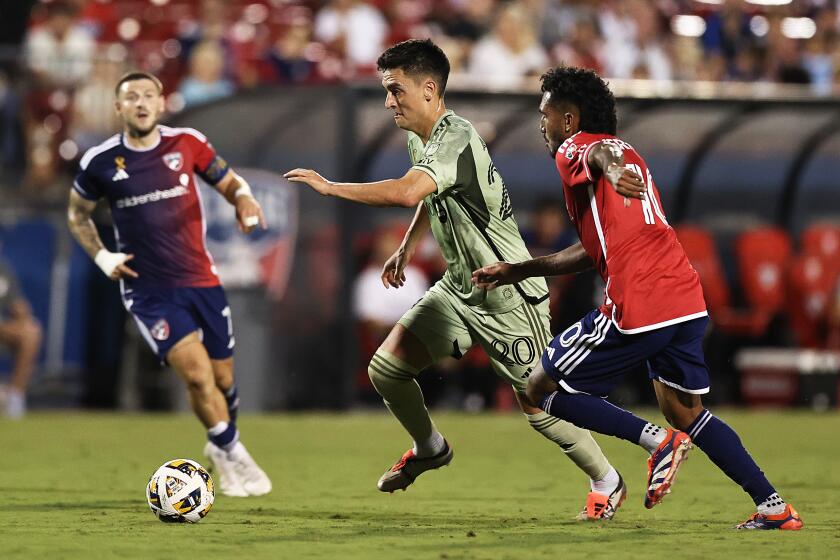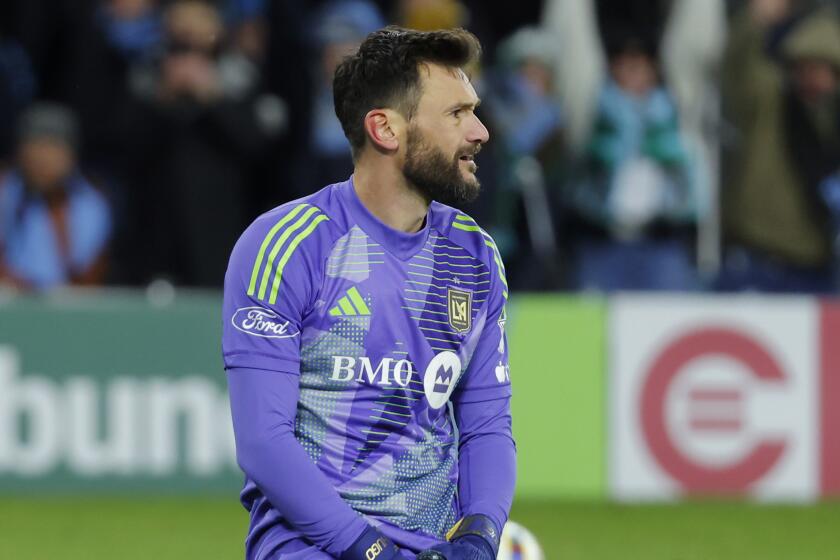Column: MLS, boasting a number of contenders, has been getting younger and more exciting

David Villa played 12 seasons in Spain’s first division, and he said that every year began the same way.
“When the season starts, it’s impossible for 15 teams to get the trophy,” he said.
That’s being optimistic, since Barcelona won the 20-team league eight times in the last 12 years and leads the table again this season. Contrast that with the newly expanded MLS, which kicked off its 22nd season Friday.
That league has had eight different champions in the last 10 seasons. And thanks to the unpredictability of the 12-team postseason playoffs, the team with the best regular-season record reached the MLS Cup final just twice in the past decade.
“Here it’s different,” said Villa, MLS’ reigning most valuable player. “You don’t have relegation but when you start the season, 22 teams have a chance of winning the league.
“This is amazing. You can’t see that in a lot of leagues.”
MLS credits that parity to a salary cap and a series of complex roster rules that are harder to figure out than honors calculus. The league has manipulated those rules, first with the advent of the designated player — which allowed teams to throw money at older, high-priced players such as Steven Gerrard, Andrea Pirlo and Frank Lampard, improving the league at the gate but not on the field. But the more recent trend has been the use of targeted allocation money from the league, a lure that has led teams to spend more judiciously on younger, useful players such as Bradley Wright-Phillips of the New York Red Bulls and the Columbus Crew’s Ola Kamara.
As a result, teams are getting younger and more exciting in their play and more creative and nimble in their front offices.
MLS rosters are limited to three designated players, who can be paid unlimited salaries that take up just a fraction of each team’s $3.845-million payroll cap. Last season, the MLS says, a record 51 of the league’s 60 DP slots were filled. (The league had 20 teams then.)
Targeted allocation money works differently. That money, provided by MLS, essentially gives teams $1.2 million in free cash to lavish on players this season. It’s not enough money to lure a big-name European veteran, but it’s enough to strengthen the middle of the roster. And not a penny of TAM is charged against the salary cap. As a result, more than 60 players — most under 30 — will begin the new season with TAM contracts.
In fact, the changes in the league have been so profound that forward Yura Movsisyan said he didn’t recognize it when he returned last year after six seasons in Denmark and Russia.
“I came back to a brand-new league,” said Movsisyan, who plays for Real Salt Lake. “Look at the players they bring in. They don’t bring in 35-year-old players any more. They bring in world-class players that are still on top of their game.”
And the league could continue getting younger. Last week MLS expanded rosters by creating two additional spots for homegrown players who have come up through a team’s development system, an enticement for teams to ramp up youth development programs. As a result, teams are likely to increase the combined $40 million the league says they spent on youth development last year.
So when the regular season opened Friday, with expansion team Minnesota United losing to Portland, 5-1, it once again began without a clear favorite but with a number of title contenders.
Dallas had the league’s best record and won the U.S. Open last season, only to wash out of the MLS postseason in the conference semifinals. However this could be the year the franchise, one of the league’s original teams, finally wins its first MLS title. It has arguably the Western Conference’s deepest roster, and if Paraguayan forward Cristian Colman continues to be as dangerous as he was at times in Saturday’s 2-1 win over the Galaxy, Dallas will be tough to beat.
Its stiffest competition figures to come from the Seattle Sounders, who won their first MLS title in 2016 and will be buoyed this year by full seasons from Clint Dempsey, Nicolas Lodeiro, Roman Torres and Coach Brian Schmetzer.
The rest of the Western Conference teams are all hounded by questions. Portland could contend if new midfielder Sebastian Blanco clicks with playmaker Diego Valeri and it finds a partner for Liam Ridgewell in central defense.while In Kansas City, forward Dom Dwyer, who scored a conference-best 50 goals over the last three seasons, will need designated player Gerso Fernandes to help distract opposing defenses.
Colorado scored just 39 goals last season — and that was with midfielder Jermaine Jones, who left for the Galaxy — so how well goalie Tim Howard plays after returning from injury will determine its success. In San Jose, four straight seasons without a playoff appearance mean Dominic Kinnear could be out as coach if he fails to lead Chris Wondolowski and newcomer Danny Hoesen to the postseason this year.
In the Eastern Conference, MLS Cup finalist Toronto is again loaded, having added Barcelona product Victor Vazquez to a roster than already included Sebastian Giovinco (39 goals, 31 assists in his first two MLS seasons) and U.S. national team stalwarts Jozy Altidore and Michael Bradley.
Toronto will get a stern test from New York City FC, whose star-studded roster is led by Villa (41 goals in his first two MLS seasons). The New York Red Bulls could also challenge if they can overcome the loss of captain Dax McCarty to Chicago and the off-season turmoil that rocked the front office. To do that, they’ll need big seasons from Sacha Kljestan (20 assists in 2016) and Wright-Phillips (24 goals).
And though MLS traditionally hasn’t been kind to expansion franchises, Atlanta United has the pedigree to buck tradition. Coach Gerardo Martino, a World Cup veteran, has a talented South American midfield of Miguel Almiron (Paraguay), Hector Villalba and Carlos Carmona (Chile). But they’ll have to produce to take the heat off a suspect defense.
Twitter: kbaxter11






